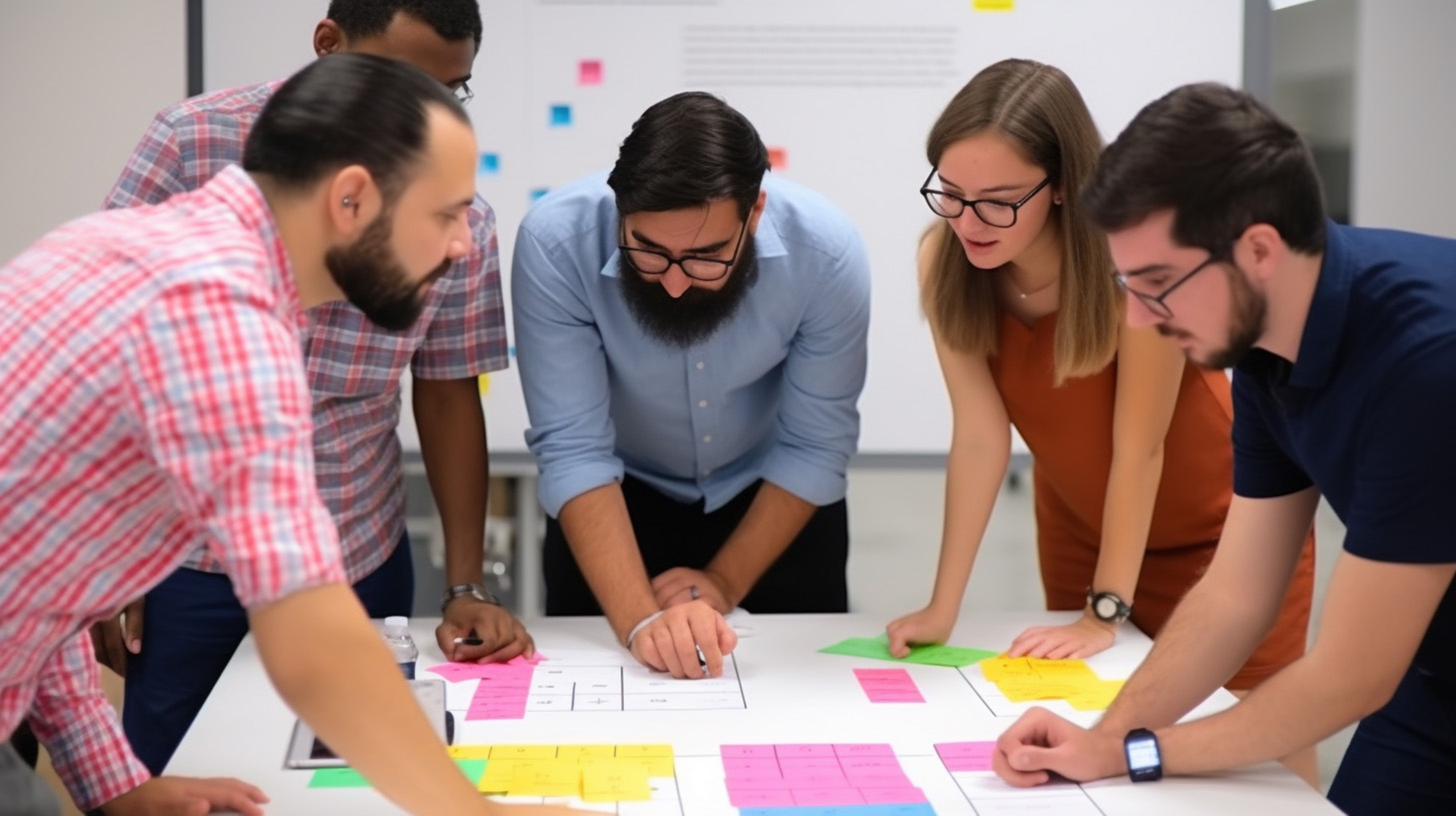Agile project management has become increasingly popular in recent years, as businesses adapt to the fast-paced and ever-changing nature of the digital world. This methodology offers a flexible and collaborative approach to project delivery, enabling teams to respond swiftly to changes and deliver value to customers more efficiently. In this article, we will provide an introduction to Agile project management, exploring various methodologies and best practices.
What is Agile project management?
Agile Project Management (APM) is a methodology that embodies the principles of agile methodologies, primarily aimed at fostering flexibility and delivering genuine value. Unlike traditional project management methodologies such as Waterfall, APM is iterative and flexible, often making it a preferred choice for software development projects. It champions collaborative effort among cross-functional teams, ensuring continuous interaction throughout the project. Through frameworks like Scrum and methodologies like Kanban, APM ensures ongoing improvement and a client-centric approach, making it an effective strategy in a rapidly changing environment.

The 4 Core Values of Agile
Agile has become the benchmark in project management due to its fluid, customer-centric approach. The foundational values of Agile, enshrined in the Agile Manifesto, shape its essence. These values guide us in executing software development projects with flexibility and adaptability. Let's delve deeper into these core values and their significance in our Agile approach:
1. Individuals and Interactions over Processes and Tools
People are the heartbeat of any project. We champion empowering our Agile teams, cultivating a culture of transparent communication and collaboration. While processes and tools play a pivotal role, it's the human interactions that genuinely catalyse progress and innovation.
2. Working Software over Comprehensive Documentation
Our paramount objective is to deliver operational software that brings value to our clients. While maintaining lucid documentation is crucial, our emphasis is on working software as the tangible evidence of progress, allowing clients to witness and appreciate the outcomes with each iteration.
3. Customer Collaboration over Contract Negotiation
We excel in nurturing a collaborative rapport with our clients. Rather than becoming entangled in contractual details, our approach is rooted in collaboration, ensuring perpetual alignment with our clients' aspirations and anticipations throughout the project's duration.
4. Responding to Change over Following a Plan
The essence of agility in Agile is our proactiveness in adapting to change. Even with a meticulously crafted plan, our approach remains adaptable, swiftly adjusting to evolving project needs and market dynamics to guarantee successful project fruition.
By embracing these core values, we distance ourselves from the inflexible frameworks of traditional project management methods like Waterfall. Our devoted agile teams, steered by these core values, are committed to translating visions into operational software.
Common Agile Project Management Challenges and How to Overcome Them
In the world of project management, adopting the Agile methodology is akin to setting sail on a river with an ever-changing current. The journey is filled with promise, but not without its set of challenges. Here's how we at Inpositiv not only identify these challenges but also steer through them with expertise.
1. Resistance to Change
Transitioning to an Agile framework can often meet resistance, especially from teams accustomed to a more structured, traditional project management approach. We tackle this by creating a conducive environment for change, providing the necessary training, and ensuring everyone understands the benefits of Agile.
2. Role Ambiguity
Agile blurs the typical roles of project manager, developers, and testers, which can cause some confusion. We define roles clearly within our Agile teams, ensuring that responsibilities are understood, and the Scrum Master and Product Owner roles are well-defined.
3. Communication Breakdowns
Effective communication is the linchpin of successful Agile project management. We prioritise daily stand-ups, sprint reviews, and retrospectives to foster open communication and ensure that everyone is aligned on project goals and progress.

4. Incomplete Deliveries
Agile emphasises working software over comprehensive documentation, but sometimes this can lead to incomplete deliveries. Our approach ensures a balance by employing robust Definition of Done (DoD) criteria, ensuring every increment is potentially shippable.
5. Overcommitting
It’s easy to get carried away in the Agile environment and overcommit to clients or stakeholders. We practise prudent sprint planning, ensuring that the scope is realistic and achievable within the sprint timeframe.
6. Lack of Metrics
Unlike traditional project management, Agile doesn’t focus on exhaustive metrics, which can be a hurdle when it comes to measuring project progress. We adopt key Agile metrics like velocity, burndown charts, and release burn-up charts to keep a tab on the progress and quality.
By addressing these common challenges head-on and leveraging our proficient Agile practices, we navigate through the potential roadblocks, ensuring your project sails smoothly towards success. Our Agile methodology implementation is geared towards not just overcoming challenges but leveraging them as stepping stones towards achieving exemplary project delivery.
Which Agile Methodology is Right for Me?
Identifying the perfect agile methodology for your project is crucial as it sets the stage for how tasks are tackled and completed within your team. Agile project management thrives on adaptability, but knowing which methodology to adopt can feel like navigating through a maze. Fear not, as we're here to shine a light on the path that will lead you to project success.
There are various Agile methodologies, each with its own set of principles and processes. The most common among them include Scrum, Kanban, and Lean. Here’s a brief look at each to help you discern which might be the apt fit for your project’s needs:
- Focus: Sprint-based, iterative progress towards a defined goal.
- Best for: Projects with changing requirements, ideal for software development.
- Unique Feature: Regular stand-up meetings to ensure everyone is on the same page and to address any roadblocks.
2. Kanban
- Focus: Continuous delivery without overloading the agile team.
- Best for: Projects with a steady flow of incoming tasks that vary in priority.
- Unique Feature: Visual project boards to track progress and workflow.
- Focus: Eliminating waste by identifying what doesn't add value to the project.
- Best for: Projects looking to optimise existing processes and reduce waste.
- Unique Feature: Emphasises a sustainable pace of work and continuous improvement.
Your choice should reflect your project requirements, team size, and the level of flexibility needed. If your project calls for a rigid, structured approach, then Scrum might be your ally. If it's a flowing, continuous process with varying priorities, Kanban could be the way to go. And if you’re looking to trim the fat and run a lean operation, the Lean methodology might be your ticket to project success.
When deliberating, reflect on the Agile manifesto and its emphasis on customer collaboration, responding to change, and delivering working software. We recommend engaging with an agile coach or seeking advice from agile practitioners within your network to better understand which methodology aligns with your project’s goals.
We at inPostiv thrive on delivering project success by tailoring agile project management methodologies to your unique needs. Our seasoned Agile coaches can help guide you on this journey, ensuring your projects flow smoothly from initiation to delivery. Choosing the right agile methodology is a crucial step towards ensuring a successful project, and we are here to ensure you make an informed decision.

